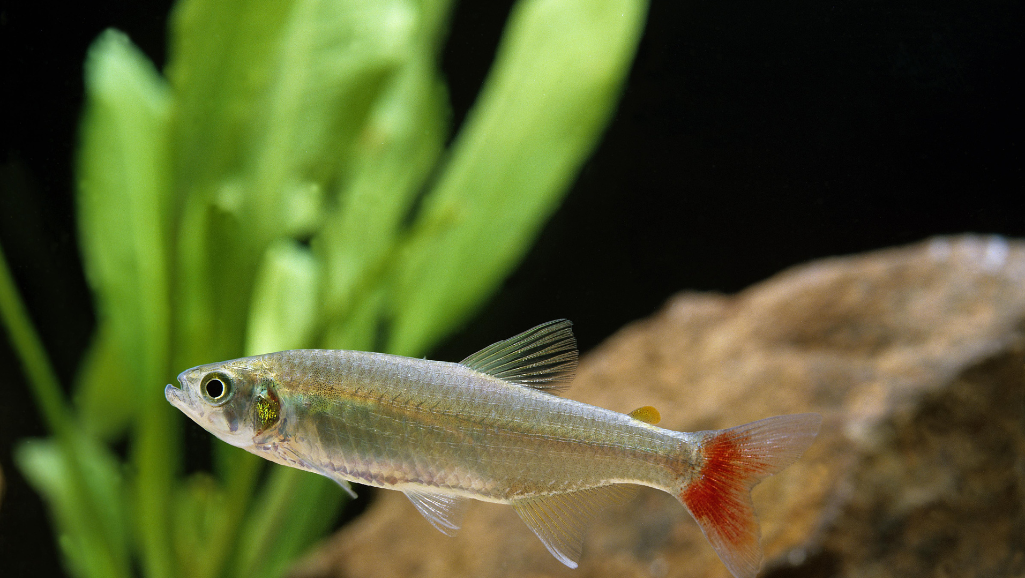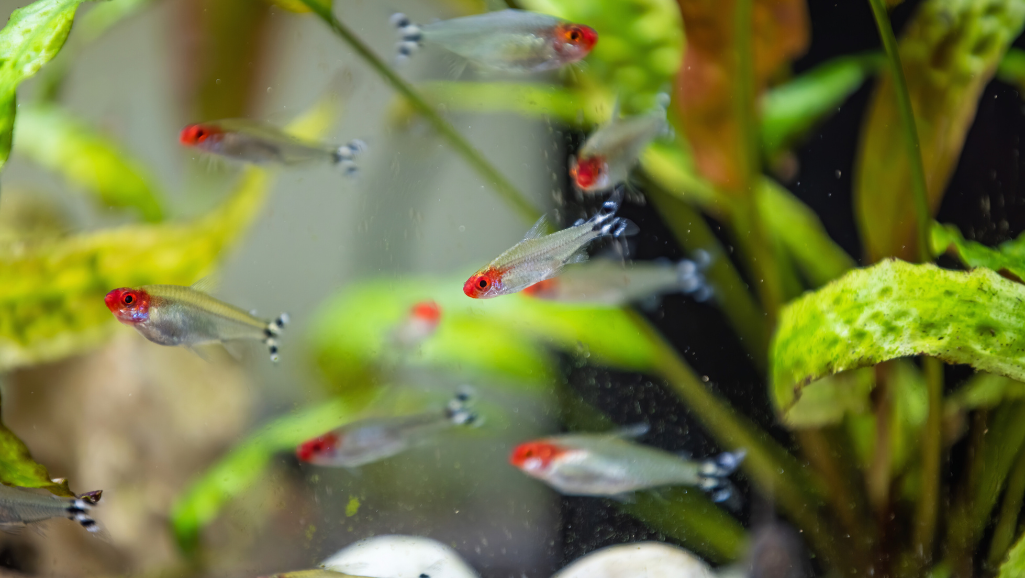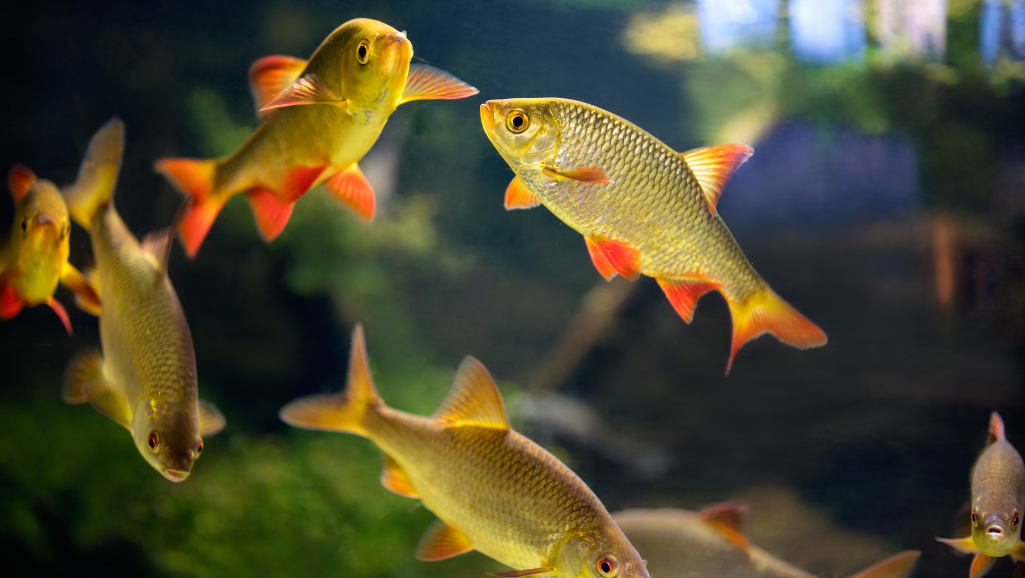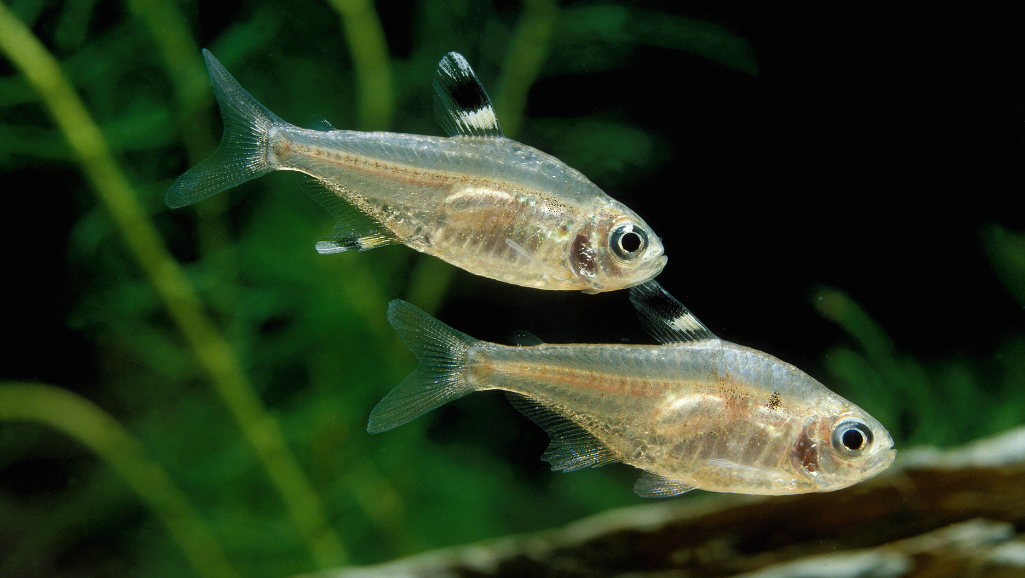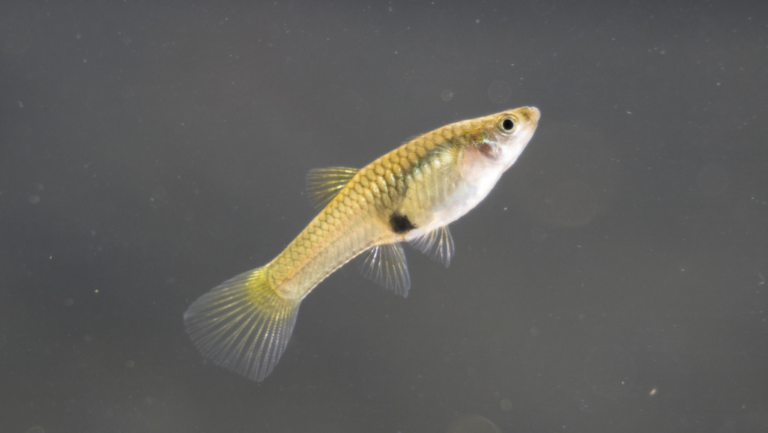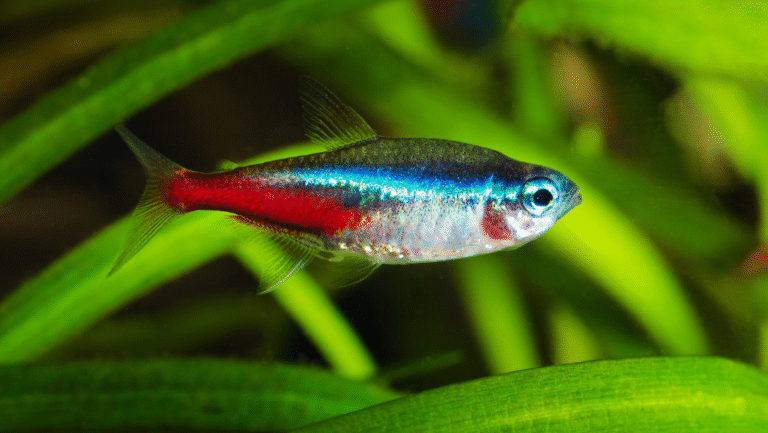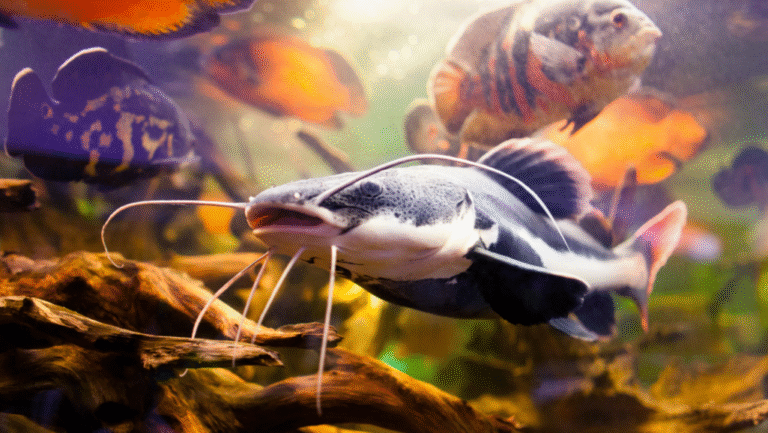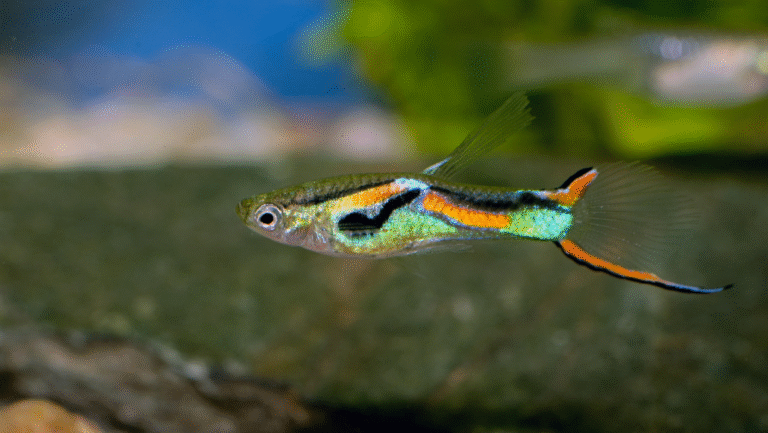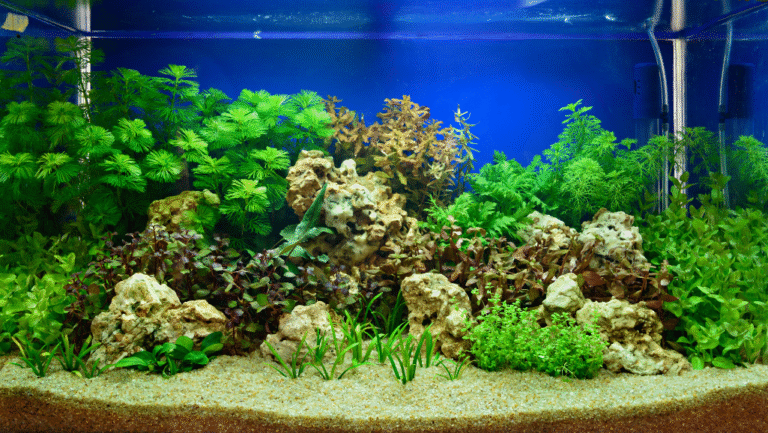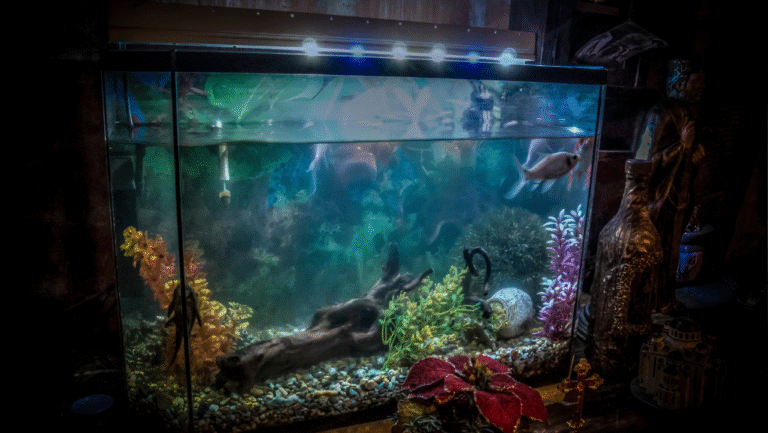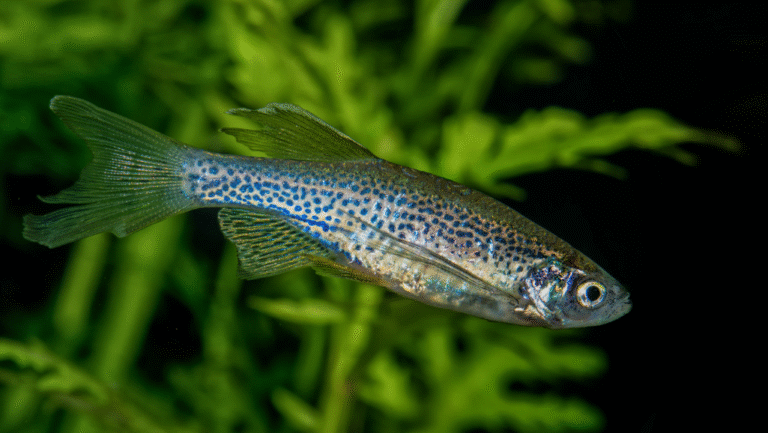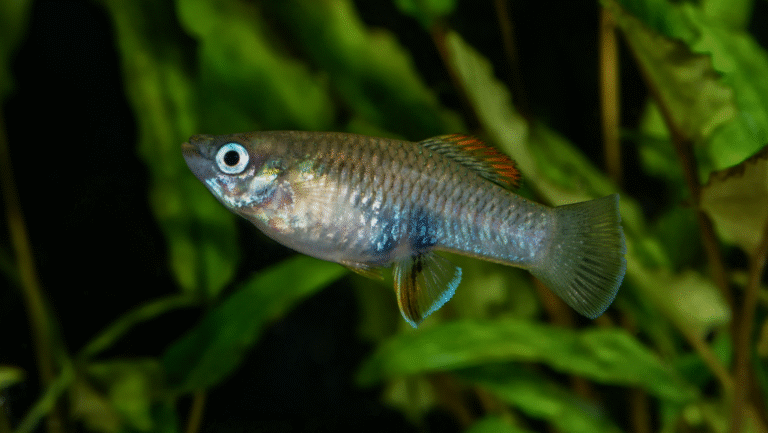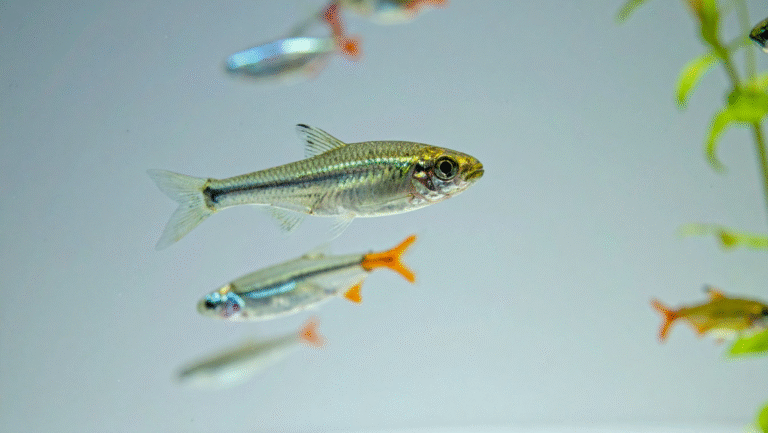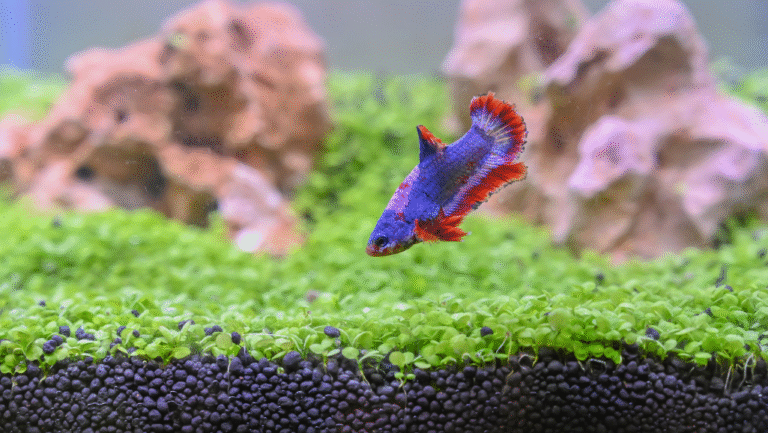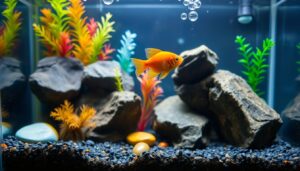Dive into the magical world of the Glass Bloodfin Tetra. This freshwater fish turns your tropical aquarium into a peaceful, colorful haven. Known as Prionobrama filigera, it has a transparent body that shows off nature’s beauty. Found in the Amazon Basin, it’s a symbol of strength and flexibility.
Enjoy the calm of these community fish, thriving with plants. They grow up to 6 cm in the right environment. Keeping them in schools of 6 or more promotes peace. With the right care, they can live up to 5 years.
Key Takeaways
- Delight in the peaceful display as Glass Bloodfin Tetra schools navigate the current in your home aquarium.
- With origins in vibrant ecosystems, these freshwater fish bring a snippet of the Amazon’s richness to your living space.
- Admire their resilience and ease of care, making them ideal even for beginner aquarists aspiring to maintain a tropical aquarium.
- Witness the growth of these fascinating creatures, up to 6 cm, and their impressive lifespan, promising up to 5 years of companionship.
- Understand the importance of a well-planted tank, mirroring their natural habitat for the utmost well-being of your Tetras.
Introduction to the Graceful Glass Bloodfin Tetra
The Glass Bloodfin Tetra is known for its delicate, translucent body and bright scarlet tail. It adds color and grace to any tank. This fish is perfect for both new and experienced fish keepers.
It’s a great community fish that loves peaceful tanks. It gets along well with other calm fish.
Starting a Glass Bloodfin Tetra care guide means learning about their needs. They come from the Amazon River Basin in South America. They like warm, clean water and lots of plants.
To keep them happy, aquariums should match their natural home. This ensures they stay healthy and active.
- Tank Size: They need at least 30 gallons. For more fish, a 50-gallon tank is better.
- Water Parameters: They like a pH of 6.5 to 7.5 and temperatures between 72°F and 78°F. Keeping these conditions right is important.
- Diet: They eat well. Give them good flakes, pellets, and sometimes live or frozen foods like brine shrimp.
Keeping their tank clean and well-filtered is crucial. They swim well and look great when they’re happy and healthy.
By understanding and meeting their needs, you’ll have a peaceful and lively tank. The Glass Bloodfin Tetra is a great choice for any aquarium. It brings beauty and calm to your home.
Glass Bloodfin Tetra: A Community Aquarium Favorite
Glass Bloodfin Tetras are known for their bright red tails and calm nature. They come from South America’s rivers in Bolivia, Brazil, and Peru. These fish do well in tanks with the right balance and tank mates.
Ideal Tank Mates for Harmonious Tank Dynamics
Choosing the right tank mates for Glass Bloodfin Tetras is key. They get along well with peaceful fish like Characins and small Catfish. For bigger tanks, Discus or Angelfish are good choices because they’re calm and won’t scare the Tetras.
Creating the Perfect Habitat for Your Tetras
To keep Glass Bloodfin Tetras happy, create a tank that feels like their home. A tank of at least 80 liters is best. Add plants and driftwood to make it look like their natural habitat. This setup helps them feel safe and active.
- Water Parameters: Glass Bloodfin Tetras can handle different water conditions. They like pH levels from 6.0 to 7.5 and water hardness up to 20 degrees dH. Keep the water between 22°C and 27°C (71°F to 80°F) for their health.
- Diet: Feed them a mix of foods to keep them healthy. Include live foods like brine shrimp and daphnia, along with good flake foods. Feeding them regularly keeps them lively.
- Tank Maintenance: Clean the tank and change the water often. This is important for keeping the water quality good, even in crowded tanks.
Following these care tips helps your Glass Bloodfin Tetras thrive. It also makes your aquarium a beautiful and diverse place to watch.
Anatomy of the Glass Bloodfin Tetra
The Glass Bloodfin Tetra is a captivating species for any tropical aquarium. It’s loved for its vivid looks and unique body structure. This freshwater fish has a nearly transparent body that shows off its internal organs. This makes it even more enchanting.
- The male Glass Bloodfin Tetra has a more streamlined body than the female. It also has a distinctively hooked anal fin. Sometimes, a dusky stripe adds to their charm.
- Females have a fuller body shape, which is more noticeable when they are gravid. This makes it easy to tell them apart from males.
Distinctive Visual Features: The Glass Bloodfin Tetra’s coloration is truly striking. Its vibrant red tail contrasts beautifully with its translucent body. This makes it a standout in any tropical aquarium.
People who love the Glass Bloodfin Tetra enjoy its iridescence. It seems to sparkle under aquarium lights. This is because of its transparent skin, which reflects hues, mainly blues. It’s a mesmerizing sight.
Due to their delicate structure and dynamic color play, Glass Bloodfin Tetras are not just pets but a living art piece. They elevate the aesthetics of any freshwater fish collection.
To fully appreciate the Glass Bloodfin Tetras, keep them in conditions that mimic their natural habitat. For more insights on creating an ideal environment, check out how to keep Neon Tetras. They share similar habitat preferences.
With their serene movement and spectacular appearance, Glass Bloodfin Tetras continue to fascinate and inspire. They are a treasured addition to any freshwater collection.
Care Guide: Ensuring a Healthy Life for Your Tetras
Keeping your Glass Bloodfin Tetras healthy is key. A good tank setup, the right water parameters, and a balanced diet are essential. This care guide will show you how to give your tetras the best life.
Optimal Tank Setup and Water Parameters
An tank setup that mimics their natural habitat is crucial. A tank of at least 80 liters (21 gallons) is a good start. But, a 100-liter (26-gallon) tank is better for about 50 fish.
The water temperature should be between 22°C to 28°C (72°F to 82°F). This keeps them active and healthy.
The water parameters are vital for their survival and breeding. The pH level should be between 7.1 and 7.2. The water hardness should be around 10° dGH. These conditions help them thrive and show off their colors.
Learning about how different environments affect care is interesting. For example, the Ember Tetra’s needs vary. This includes their diet and how they live together.
Diet and Feeding Recommendations
Glass Bloodfin Tetras need a varied diet because they are omnivorous. They eat small invertebrates in the wild. So, feed them live or frozen foods like brine shrimp and bloodworms. Also, give them high-quality dry foods to meet all their nutritional needs. This diet supports their health and color.
Feed them small amounts one to two times a day. This matches their natural feeding habits. It prevents overfeeding and keeps them healthy. For more tips, check out a guide on Bloodfin Tetras.
- Ensure a balanced diet to promote vibrant colors
- Maintain stable water temperatures and pH levels
- Implement gentle filtration to mimic soft, flowing waters
Following these guidelines will make your tetras’ home a sanctuary. These conditions support their life and make them more vibrant and long-lived. Your aquatic journey will be a success.
Breeding Tips for the Aspiring Aquarist
The journey into Glass Bloodfin Tetra breeding is exciting and complex. It requires precision and care. These freshwater fish are spectacular to watch and help in species conservation. To breed them, focus on their environment and diet.
Creating a separate breeding tank is key. It should be calm with fine-leaved plants or spawning mops. Water should be soft and acidic, with a temperature of 80 to 84℉. Also, feeding them high-quality foods can help with breeding.
- Introduce a dedicated breeding tank with appropriate water parameters.
- Use fine-leaved plants or spawning mops for egg deposition.
- Maintain water temperature between 80 and 84℉ for optimal spawning conditions.
“Immediate removal of the parents post-spawning is critical as they may consume the eggs.”
Eggs hatch in 14 to 36 hours. Fry need infusoria-type foods first, then microworms or baby brine shrimp. Following these breeding tips ensures healthy growth and population in your aquarium.
Knowing which fish to keep together is important. The AqAdvisor database helps with this. Glass Bloodfin Tetras are peaceful and go well with similar species.
For more on care and breeding, check out resources on similar species. They offer useful tips for all aquarium enthusiasts.
Conclusion
The Glass Bloodfin Tetra, known as Aphyocharax anisitsi, is a great pick for anyone wanting to spice up their aquarium. They come from South America, thriving in the subtropical climate. These fish love water between 18°C – 28°C and a pH of 6.0 – 8.0, making them easy to care for.
Even though they’re popular in aquariums, they don’t do well outside their home. This shows how important it is to care for them right. With the right care, they can thrive in their new home. They need water that’s just right, with no too many nitrates or pH swings.
Adding Glass Bloodfin Tetras to your tropical aquarium makes it more beautiful. It’s also a fun way to watch these peaceful fish. They’re part of a big family of Tetras, each with its own charm. These fish bring joy and beauty to aquarium lovers everywhere.
